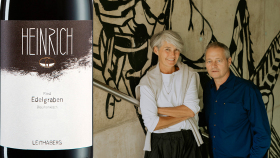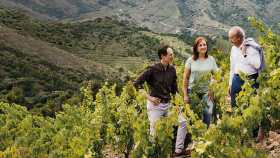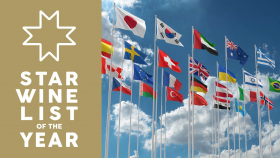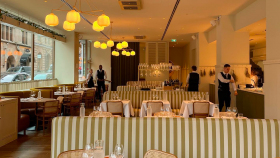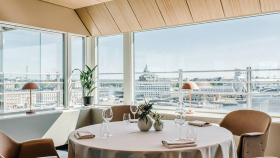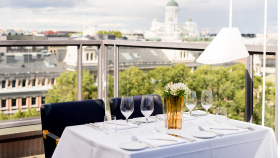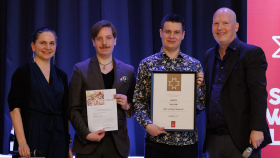Blaufränkisch across Borders - The Austrian Wine Summit 2019
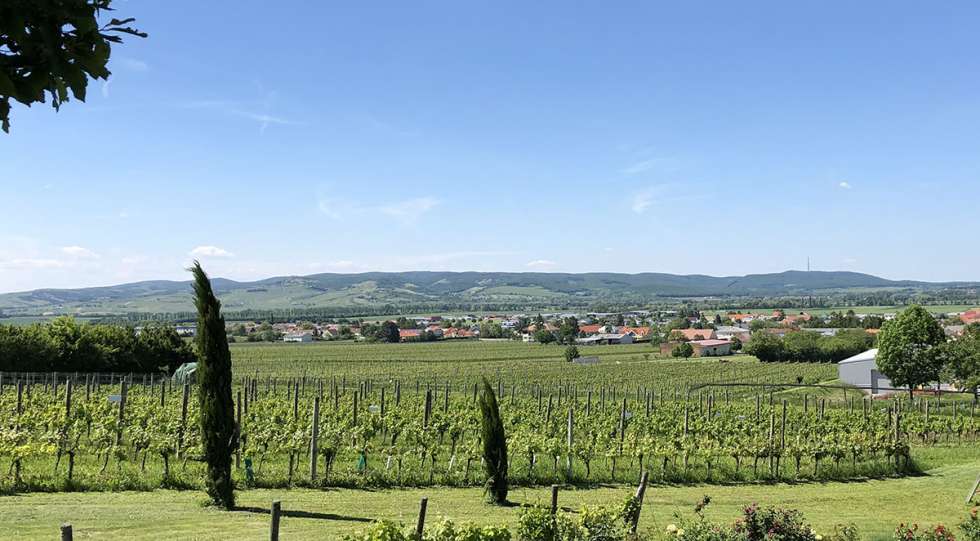
At the end of May, 200 journalists and sommeliers from all over the world descended on Vienna for the bi-annual Austrian Wine Summit. The theme of this year’s event was Vineyard Interfaces in the Heart of Europe. Star Wine List’s Krister Bengtsson was there.
”How big is Sopron? What is the proportion of whites in Sopron? And which are the white wines?”
The outgoing Austrian Wine president Willi Klinger had plenty of questions for winemaker Birgit Pfneisl during the tasting at the border of Austria’s Mittelburgenland and Hungary’s Sopron.
For even though these vineyards used to belong to the same nation for centuries, the first world war put an end to the Austrian-Hungarian empire. For much of the last hundred years, the regions lived separate lives.
Pfneisl, or Pfneiszl in the Hungarian spelling, is one of the cross-border families who work and live across the lines that used to be separated by barbed wire and machine gun towers. The family lost their vineyards in Hungary due to land reforms in 1921 and then emigrated to Austria where they lived for three generations before going back to buy new vineyards after the fall of the iron curtain. Since 2002 they are back in production, and from 2006, the sisters Birgit and Katrin run the business.
For the Pfneisls, Blaufränkisch, or Kekfrankos as it’s called in Hungary, is the main grape. And after travelling Austria’s borders with the Czech Republic, Slovakia, Slovenia and Hungary, and after tasting hundreds of wines from different soils and production methods – it is Blaufränkisch/Kekfrankos that sticks in my mind.
Blaufränkisch/Kekfrankos thrives when handled with care
The white Grüner Veltliners of Weinviertel and the Sauvignon Blancs and blends from Steiermark are excellent, but among the reds, the best Blaufränkisch from Sopron, Eisenberg, Mittelburgenland and Spitzerberg stand head and shoulder above the other red grapes and blends from these regions, in my opinion.
The fresh, natural acidity and texture of the Blaufränkisch grape thrives when handled with care (not too much oak), and compared to the heaviness of an oaky full-blown red from the area, the Blaufränkisch seems light like a feather. The more natural producers do wonders with the grape too, leaving pure red fruit and minerality in the open.
The idea to invite neighbouring countries to an Austrian wine summit has for a long time been a dream of Willi Klinger
American wine writer David Schildknecht, who led parts of the program, explains that Blaufränkisch rose in prominence in the region in the mid 18th century. In the 1980’s it suffered from over-extraction from winemakers who were trying to pull out what was not there.
The idea to invite neighbouring countries to an Austrian wine summit has for a long time been a dream of Willi Klinger, who’s now stepping down after 13 years as the head of the Austrian wine marketing board. It was a bold endeavor, and there have been grumbles from some Austrian winemakers who wondered why they should sponsor events that include their competitors.
At one tasting station, where the neighbouring wines did not impress very much, a visiting reporter joked that perhaps the Austrians had invited the neighbours to shine even more. But at another station, the tables were turned.
One thing is clear from traveling through the Eastern border regions, there is an incredible diversity of styles, from sparkling to whites to reds and from rosés to orange wines.
DAC rules – and the search of something new
With the Austrian DAC system, region after region is implementing appellations that define what regions, villages and labels with single vineyards stand for. And at the same time, a vibrant natural wine scene throws off the traditional styles in search of something new and fresh.
As the Austrian Wine Summit drew to a close, the writers, sommeliers and organizers met in Vienna to continue tastings and listen to historians talk about the history of Austrian wine - which included shining a light on the Nazi times.
Willi Klinger ended the summit in Vienna on an emotional and symbolical note as it was the same day as the elections to the European parliament.
”I strongly hope that open-minded parties will have the majority for the future in Europe, to contribute to freedom and brotherhood among our countries.”
Cheers to that, Willi Klinger.
Blaufränkisch/Kekfrankos producers:
Here are a few Blaufränkisch/Kekfrankos producers from the border regions that are particularly noteworthy, in my book:
• Bott Frigyes (Slovakia)
• Franz Weninger (Austria, Hungary)
• Muhr-van der Niepoort (Austria)
• Pfneiszl (Hungary)
• Nador (Hungary)
• Wachter Wiesler (Austria)
Use our search engine at the top to see where you can find these wines on restaurant and wine bar wine lists near you.
Do like the Pros - search 2500+ wine lists





